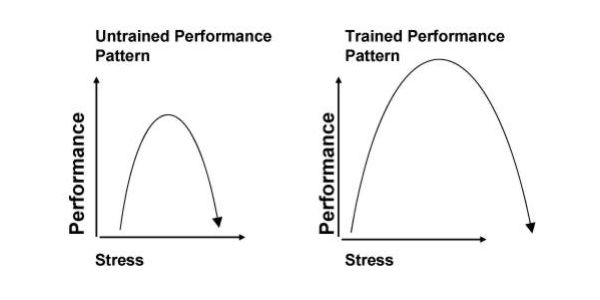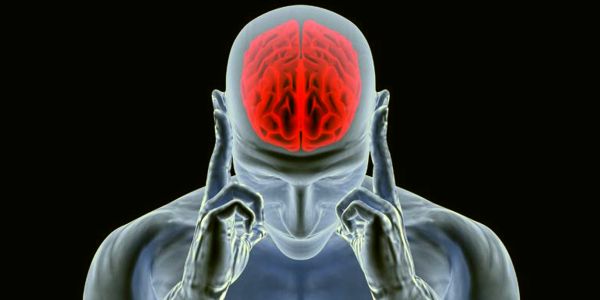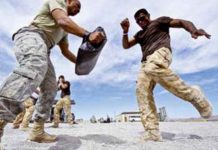The modern training arena is becoming more focused on efficiency of skill acquisition. This is primarily due to the increase in the complexity and quantity of scenarios available to train. To move the student from probability of failure to a high chance of survival in combat is no easy task. Each human being has a unique set of experiences and capabilities they bring to the training floor. The job of the instructor is to mold these existing assets and combine them with new techniques. This will increase the performance capacity of the student so they may ultimately survive the arenas they will experience upon graduation. Scenario training and stress are inexorably linked in most training and it is important that the student be shown sound strategies to success. A great strategy for the student focus can be found in “Observe Orient Decide Act” (O.O.D.A.**); an excellent focus point for the student to work within the training environment. This clear description of a solid mental process provides a strong footing for the student to move through stress and create action (1). Action is what gets a training exercise completed successfully.
This article was initiated from a course I took from Jim Wagner (creator of the “Reality-Based Personal Protection” system); we discussed the need for a introductory document on stress and training. The instructor needs to be able to understand more and see more in the student than they see in themselves. The goal of this paper is to inform the instructor of modern martial arts how to maximize the performance of students while they undergo stress based scenarios. While this is not a new topic some do’s and don’ts exist to create faster and more efficient skills acquisition. In this article we will initiate an exploration of how stress works and how to communicate effectively with the student using stress to create success.
The goal of training is to increase endurance and push the thresholds of the student to greater heights. While a great many options exist to trainers as to how they will teach their material, ultimately they must all come to terms with how stress will affect each student.

The levels of stress frequently found in a “live exercise”, or “active simulation” portions of military training is a unique experience in life that most will never encounter. Stress can take a student to higher levels of performance and greater stress tolerance than the untrained individual. (2)
**The OODA Loop is a concept originated by military strategist Col. John Boyd of the United States Air Force.
A great example of stress in training is the Chemical Training Rooms experienced by many military recruits. It was thought that simply putting a recruit through a class and then exposing them to gas (tear gas etc) would increase the performance of the trainee in the real world (pre 1990). This however turned out wrong as studies showed that it created marked increased in performance anxiety, slowed down the student and created more technical errors and events of paralysis. (3) It is not enough to have raw exposure and hope for the best as time is costly to all involved. Performance stress can be reduced by guiding the student through the scenario as it occurs, reducing washouts and re-testing. Why?
The normal relaxed state of the human mind has full access to both hemispheres and all the sub-structures of the brain. In the intensity of training there is rush of adrenalin and endorphins etc which creates heightened awareness, increased strength and overall “jumpiness” or hyper vigilance in the student. While the previous factors are of immense value there is also a cost. The stress cocktail forces the operation of the brain to focus more from the core limbic structures often referred to as the reptilian brain** or in this article the “survival mind”. (4)(5)
The standard untrained response pattern for the average person undergoing intense stress is as follows: (6)
- Freeze (predators of all species key on movement so this buys time),
- Flee (The chemical cocktail optimizes gross motor skills and reduces pain receptor function),
- Fight (if you cannot evade the threat, use the energy to fight the threat),
- Faint (when all else fails the mind shuts down to itself from further unpleasantness.) (See “Tonic Immobility”; typical in many rape situations).
The hormonal influences of stress serve primarily to prepare the body perform.(7) Stress magnifies the influence of the survival mind to maximize reaction time and to maintain overall safety of the individual. This is important; the focus of this chemistry comes with a set of instructions on how a person will behave under heightened stress. These instructions are hard wired and set in place, the instructor must work with these instincts to maximizing performance while holding off the tendency to overload and freeze up. By pushing the thresholds of the performance stress relationship the student can achieve higher orders of efficiency and action in a manageable state.
The student must be taught to navigate this heightened state. Most people will jump at a loud sound. An untrained person will look around with concern at the shout of “GRENADE”; a trained person will throw him/herself to the ground and be ready for the earth to heave. A trained sniper can still make a good shot even with a drill instructor unexpectedly screaming at him/her. Once an instructor knows how each student navigates the baseline, then the process of training in a successful O.O.D.A. sequence can begin. How to do this with the most efficiency is of value to all involved.
**Reptilian brain – The brain stem, the oldest part of the brain the first to grow, the center for our survival instinct (fight or flight), our ritualistic needs, breathing etc.
Communication with a mind in a state of stress is unique. Complex ideas and concepts cannot be properly processed in a mind that is operating at increasing levels of instinctual behavior. The mind is focusing inward across a narrowing field of survival priorities. The process of a stress response can be easily [“stymied by overly verbose vernacular and complexity”], stalling; just like now with that bolded text. The survival mind looks for immediate safety. Information that does not instantly aid this goal will be ignored or worse create a delay in action. Under peak moments of stress, the mind does not have ready access to the classroom information, it is stored in the higher levels of the brain and it needs the reasoning centers to access it. How do we empower the resources available?
The answer to this is to make use of easy-to-understand commands applied in a stress-free tone to encourage the mind forward down the implied training path. Simple two or three word instructions to reinforce the behavior needed.** To understand something, the mind must “see” the words one hears to create a reality that plays out. If I were to ask you “Have you seen my dog?” most people will create a picture of a dog in their mind, quickly scan for any and all dogs they have seen in the environment of their recent past and respond. If I say “Have you seen my big vicious black dog with the missing leg?” the picture in the mind becomes much more clear and the mind has a more concise parameter to search for and the response will be that much more useful. This is the nature of most of the input stimulus we receive, we see in our minds before we respond in the world. (8)
With stress narrowing our resources, applying stress incrementally becomes superior. (9) By breaking up a training event and showing the solution to survival creates a road map for future success. Such a series of small victories will encourage the survival mind to act concisely in future events. Keep in mind however that the student will have reduced access to only the simplest information when more intense scenarios are applied. Complex information is not readily available through the chemistry of the survival mind; as there can be a 1 to 3 second delay before access to higher function can occur. (7)
As a trainer, assessment and judgment communicated in a negative manner will stall the untrained mind. Instead of yelling “why are you lying on the ground”, “What are you going to do now?”; the mind will have to visualize and answer these questions before it can proceed; this will then become a part of the O.O.D.A. process. A simple statement, “Get up”. secure a weapon”, will create a much faster response from the student. Calm and aware is what you want the student to be; the communication to the student should reflect these qualities. Increase the stress later and challenge the state of student in follow up scenarios to test the students resolve. Many successful training elements have been used by many generations, we need only to be aware of this middle mechanism of the survival mind and honor it. In doing so we make use the survival mind and the power it can deliver; reflexes strength etc.
**For those who want to dig into communication methods, a proven method with a good record of success philosophy can be found in “Neuro Linguistic Programming or “NLP” for short.
Stress training is a direct input channel to the instinctual center which adds to the survival minds strategy repertoire. Once the mind has a strategy, all it needs to do is recognize the parameters needed to execute and replicate the action that has worked the past. The mind becomes “stress aware” in that it can perform through of extremes of stress using the information from training.
Classroom training is invaluable given the complexity of today’s world and success at the end of any course is based upon building and pushing the thresholds of the student to new heights. Remember that stress changes your student and be aware of these effects. Make use of communication that will make the stress of the training environment work for the student; positive and calm instruction will provide a path of instant action. Build the awareness of stress and the O.O.D.A sequence to increase the performance capacity of the student. If you can keep your students moving, they will have the options needed to survive.
Joe Goodings is a student in the “Reality-Based Personal Protection” system of Jim Wagner.
Bibliography / Reference material / Further Reading
- Reality Based Personal Protection, Jim Wagner, Black Belt Communications LLC 2006, page 37
- Peak Performance, Sports Psychology, https://web.archive.org/web/20081216144006/http://www.pponline.co.uk:80/encyc/0846.htm, February 14, 2007.
- Stress and Human Performance Final Report, NAVTRASYSCEN TR86-022, James E. Driskell, Honwyn Carson, Patrick J. Moskal, Naval Training Systems Center, Orlando Florida, December 1986.
- “Reptilian Brain”, Wikipedia, https://en.wikipedia.org/wiki/Limbic_system, April 2007.
- Simulation and Training for Stress Environments: A Meta-Analytic and Experimental Evaluation, June 1995 United States Army Research Institute for the Behavioral and Social Sciences.
- Freeze, Flight, Fight, Fright, Faint: Adaptionist Perspectives on the Acute Stress Response Spectrum CNS Spectrums Sept 2004, Volume 9 Number 9 Page 679, , H. Stefan Bracha, MD
- The Psychobiology of Stress and Healing, Part 1 of 3: A Framework for Modern Psychobiology, Dr. Philip Hayes, Stress News 2002, Vol 14. No 2.
- The Structure of Magic: a book about Communication and Change, John Grinder & Richard Bandler, Science and Behavior Books Inc. , 1976
- Military Psychology, 1992. Vol. 4. No. 3, pages 157-174.






